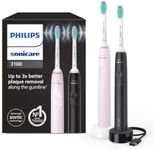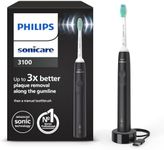Buying Guide for the Best Electric Toothbrushes
Choosing the right electric toothbrush can significantly improve your oral hygiene routine. With various models and features available, it's essential to understand what to look for to find the best fit for your needs. Here are some key specifications to consider when selecting an electric toothbrush.Brushing ModesBrushing modes refer to the different settings an electric toothbrush offers, such as daily clean, sensitive, whitening, gum care, and deep clean. These modes are important because they cater to different oral care needs. For example, if you have sensitive gums, a toothbrush with a sensitive mode can provide a gentler brushing experience. If you want to focus on whitening your teeth, a whitening mode can be beneficial. To choose the right one, consider your specific oral health needs and preferences. If you have multiple concerns, look for a toothbrush with a variety of modes.
Brush Head CompatibilityBrush head compatibility refers to the types of brush heads that can be used with a particular electric toothbrush handle. This is important because different brush heads are designed for different purposes, such as plaque control, gum care, or orthodontic care. Some toothbrushes are compatible with a wide range of brush heads, giving you the flexibility to switch based on your needs. When choosing, consider if you want the option to change brush heads for different purposes or if you prefer a simpler approach with fewer options.
Battery LifeBattery life indicates how long the toothbrush can be used on a single charge. This is crucial for convenience, especially if you travel frequently or prefer not to charge your toothbrush often. Electric toothbrushes typically have battery lives ranging from a few days to several weeks. If you travel often or don't want the hassle of frequent charging, look for a toothbrush with a longer battery life. For home use, a shorter battery life might be sufficient if you don't mind regular charging.
Pressure SensorA pressure sensor is a feature that alerts you if you are brushing too hard, which can prevent damage to your gums and enamel. This is important for maintaining good oral health, as brushing too hard can lead to gum recession and enamel wear. If you tend to apply a lot of pressure while brushing, a toothbrush with a pressure sensor can help you develop better brushing habits. For those who are confident in their brushing technique, this feature might be less critical.
Smart FeaturesSmart features include connectivity options like Bluetooth, which allow the toothbrush to connect to a smartphone app. These apps can provide real-time feedback, track your brushing habits, and offer personalized tips. Smart features are important for those who want to improve their brushing technique and maintain better oral hygiene. If you enjoy using technology to enhance your daily routines, a toothbrush with smart features can be very beneficial. However, if you prefer a straightforward brushing experience, you might not need these advanced features.
Timer and PacerA timer and pacer help ensure you brush for the recommended two minutes and spend an equal amount of time on each quadrant of your mouth. This is important for thorough cleaning and maintaining good oral health. Most electric toothbrushes come with a built-in timer, but some also have a pacer that signals when to move to a different part of your mouth. If you struggle to brush for the full two minutes or tend to focus on certain areas more than others, a toothbrush with a timer and pacer can help you develop better brushing habits.
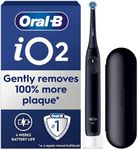

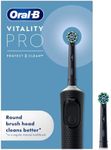
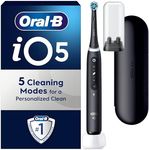
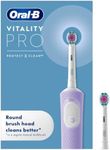
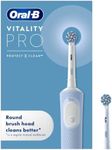
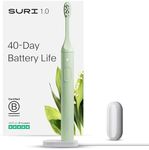
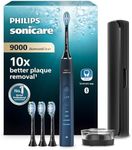
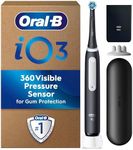
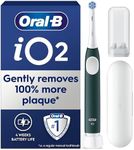
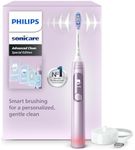
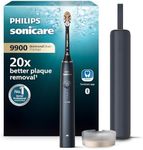
![Philips Sonicare 5300 Electric Toothbrush, Sonic Toothbrush with 2 Intensity Levels, Pressure Alert, EasyStart, SmarTimer and BrushPacer, Black, Model HX7101/01 [New Technology]](https://images-proxy.bestreviews.guide/M9BhmaIHeULow_KQUxp3TWKRZjA=/0x150/https://m.media-amazon.com/images/I/41Ogg9G6+ZL._AC_CX679_.jpg)
